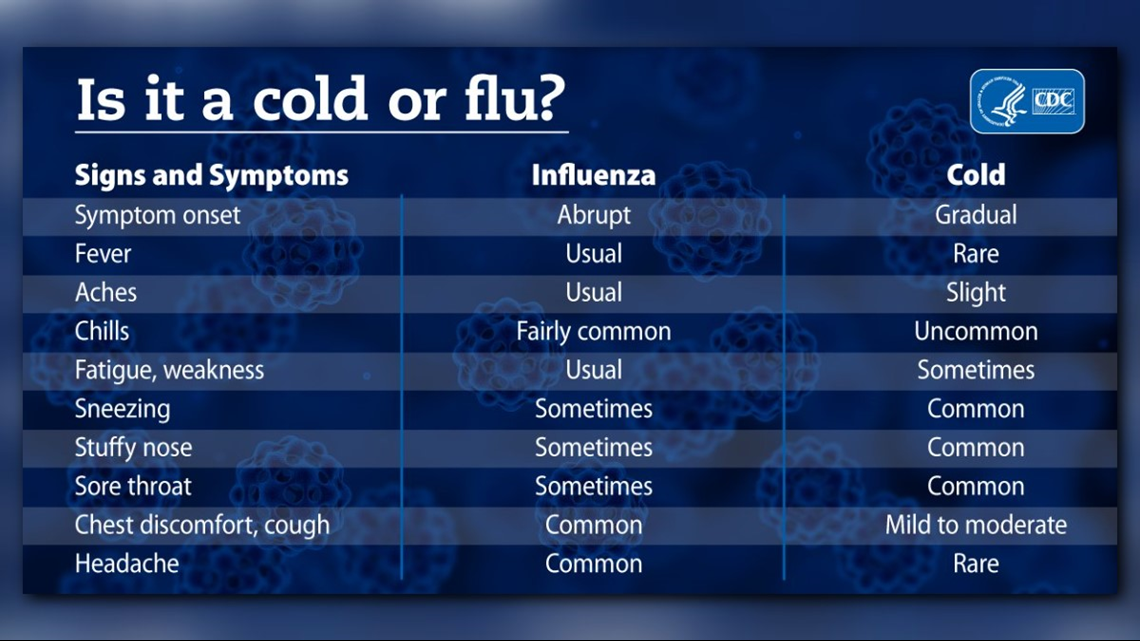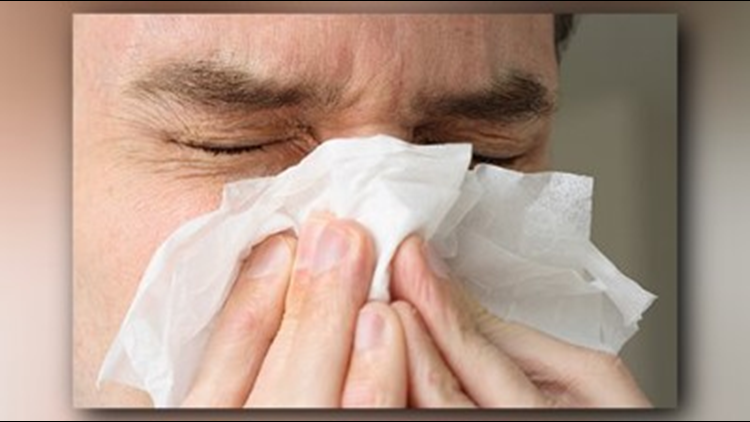TYLER, Texas — Flu activity in East Texas has wreaked havoc on school districts across the region resulting in numerous cancellations.
So it's no surprise the Walgreens Flu Index reports the Tyler-Longview (Lufkin and Nacogdoches) area is ranked No. 1 for the most flu activity in the nation.
The Dallas-Ft. Worth market came in second.
Other Texas regions on the top 10 list include:
- Waco-Temple-Bryan (No. 7)
- El Paso (No. 10)
In the state flu activity report, Texas ranks third overall behind Mississippi and Nebraska. Arkansas comes in at No. 7, while Louisiana barely slips in the top 10 at No. 9.
According to Walgreens, the East Texas area is seeing 6.28 times the average flu index – a measurement that represents the number and frequency of flu incidences in a given area – for the week.
From October 1, 2018, through January 26, 2019, more than 10 million flu-like illnesses were reported across the United States, resulting in around 5 million medical visits and more than 118,000 hospitalizations, according to data released by the Centers for Disease Control and Prevention.
SYMPTOMS OF THE FLU
The flu is a contagious respiratory illness caused by viruses and usually comes on suddenly. It can cause mild to severe illness, and at times can lead to death.
Symptoms include:
- Fever or feeling feverish/chills
- Cough
- Sore throat
- Runny or stuffy nose
- Muscle or body aches
- Headaches
- Fatigue (tiredness)
- Some people may have vomiting and diarrhea, though this is more common in children than adults.
COLD VS. FLU
The flu and the common cold are both respiratory illnesses but they are caused by different viruses.
Because these two types of illnesses have similar symptoms, it can be difficult to tell the difference between them based on symptoms alone.
In general, the flu is worse than the common cold and symptoms are more intense. Colds are usually milder than the flu. Those with colds are more likely to have a runny or stuffy nose.
Colds generally do not result in serious health problems, such as pneumonia, bacterial infections or hospitalizations. The flu can have very serious associated complications.


TIPS ON PREVENTING THE FLU
According to the CDC, the single best way to prevent seasonal flu is to get vaccinated each year, but good health habits like covering your cough and washing your hands often can help stop the spread of germs and prevent respiratory illnesses like the flu.
The tips below will help you learn about steps you can take to protect yourself and others from the flu and help stop the spread of germs:
- Avoid close contact - Avoid close contact with people who are sick. When you are sick, keep your distance from others to protect them from getting sick too.
- Stay home when you are sick - If possible, stay home from work, school, and errands when you are sick. This will help prevent spreading your illness to others.
- Cover your mouth and nose - Cover your mouth and nose with a tissue when coughing or sneezing. It may prevent those around you from getting sick. Flu and other serious respiratory illnesses, like respiratory syncytial virus (RSV), whooping cough, and severe acute respiratory syndrome (SARS), are spread by cough, sneezing, or unclean hands.
- Avoid touching your eyes, nose and mouth - Germs are often spread when a person touches something that is contaminated with germs and then touches his or her eyes, nose, or mouth.
- Practice other good health habits - Clean and disinfect frequently touched surfaces at home, work or school, especially when someone is ill. Get plenty of sleep, be physically active, manage your stress, drink plenty of fluids, and eat nutritious food.
- Wash your hands - Washing your hands often will help protect you from germs. If soap and water are not available, use an alcohol-based hand rub.
PREVENTING THE FLU AT SCHOOL
Parents are encouraged to find out about plans their child’s school, child care program or college has if an outbreak of the flu or another illness occurs and whether flu vaccinations are offered on-site.
Make sure your child’s school, child care program or college routinely cleans frequently touched objects and surfaces and that they have a good supply of tissues, soap, paper towels, alcohol-based hand rubs and disposable wipes on-site.
Ask how sick students and staff are separated from others and who will care for them until they can go home.
PREVENTING THE FLU AT WORK
In order to avoid an outbreak at work, find out about your employer’s plans if an outbreak of flu or another illness occurs and whether flu vaccinations are offered on-site.
Routinely clean frequently touched objects and surfaces, including doorknobs, keyboards and phones, to help remove germs.
Make sure your workplace has an adequate supply of tissues, soap, paper towels, alcohol-based hand rubs and disposable wipes.
Train others on how to do your job so they can cover for you in case you or a family member gets sick and you have to stay home.
If you begin to feel sick while at work, go home as soon as possible.



